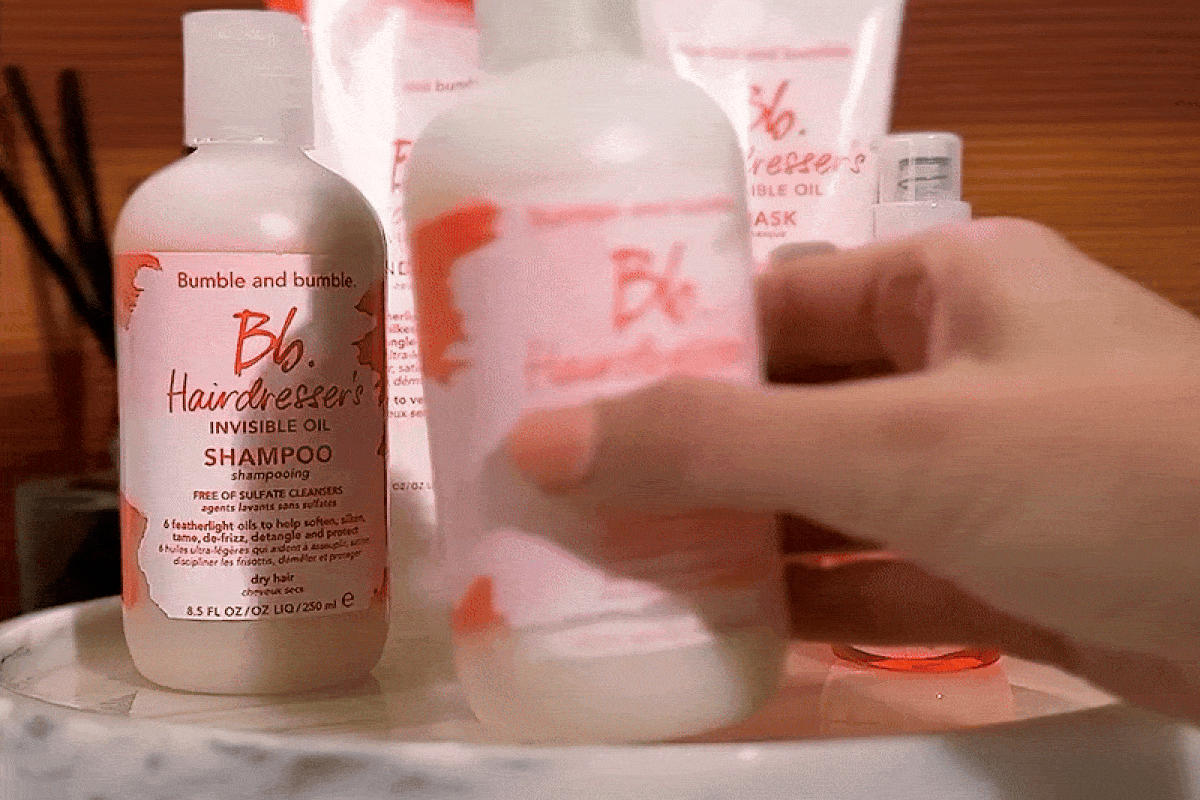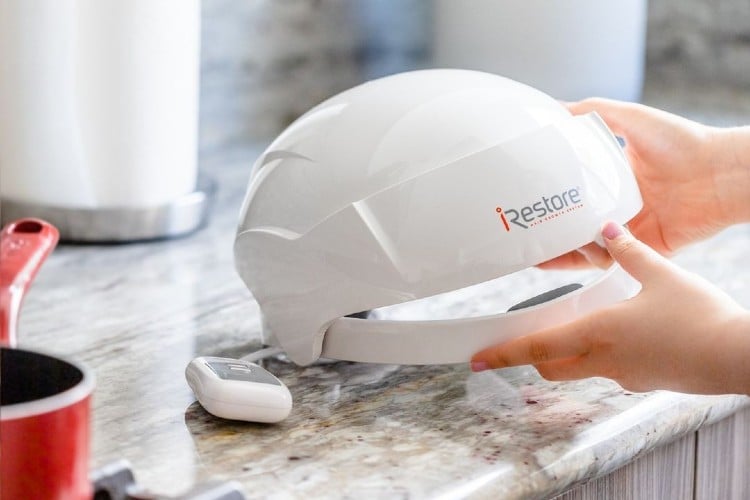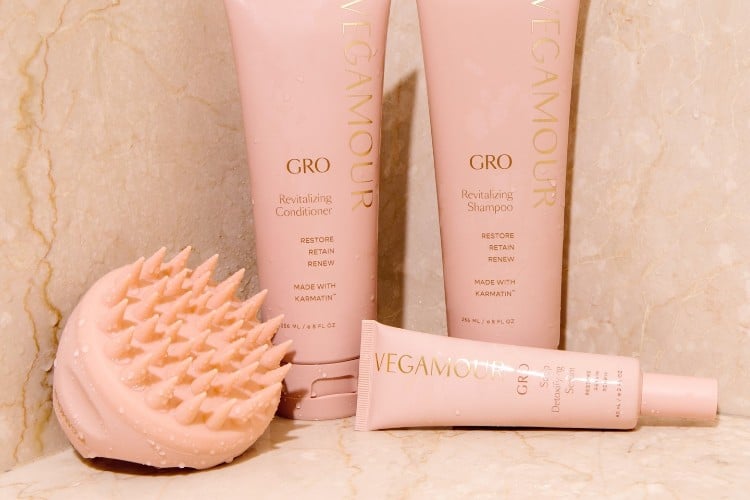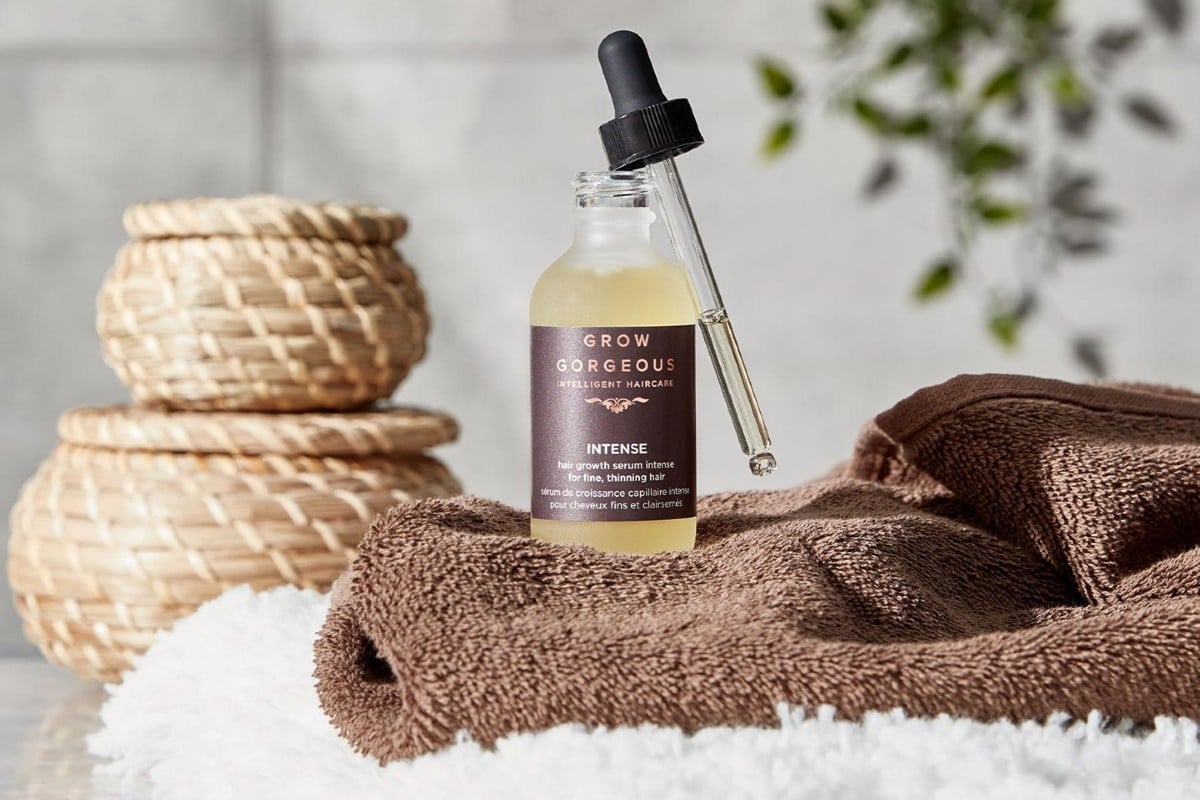Did you wash your hair yesterday and the very next day it starts to look and feel greasy? Then you know how downright annoying having greasy hair can be. I mean, who wants strands that stick together like glue on their head? It’s a total mess and makes us look like we’ve rolled in the dirt. And let me tell you that simply washing your hair every day will not solve the problem in the long run. In fact, it might even make things worse. So what’s the best thing you can do? Let’s take a closer look at the most effective techniques to manage oily hair and make it less greasy without constantly reaching for the shampoo bottle.
- Adjust your shampoo schedule
- Dry shampoo
- Baby powder
- Apple cider vinegar
- Aloe vera
- Don’t brush your hair too often
- Exfoliate your scalp
- Choose the right hair products
- Quit playing with your hair
- Opt for a hairdo that works well with oily hair
- Be careful with heating tools
- Just rinse your hair after working out
- Change the sheets once a week
How does hair become greasy?
Essentially your hair becomes greasy when the body naturally produces too much sebum. Your scalp has these little oil factories called sebaceous glands, and their job is to pump out sebum.
Sebum is not all bad; it’s there to hydrate and protect the hair and make it soft. But sometimes, whether it’s genes or a hormonal hoedown, those glands go into overdrive, churning out more oil than usual, leading to excess sebum. That’s when your hair starts to stick together and look greasy.
Several factors are known to cause greasy hair, including:
- Genetics
- Vitamin B deficiency
- Living in a highly humid environment
- Hormonal disorders, such as during puberty or menopause
- Using oil-based or waxy hair products
- Unhealthy eating habits
- Stress
- Condition called seborrhea
How to train your hair to be less greasy
First, ease up on the washing. If you wash your hair every day, your glands think, “Hey, where’d all the oil go?” and start making more sebum to replace what’s lost during washing, leading to greasier hair.
Try washing your hair less often instead, two times a week. I know this might sound like climbing Everest without a coat when dealing with that clingy, greasy texture that practically begs you to jump back into the shower. But hang tight. You’ll find that your hair will look more natural and less greasy once it gets used to the less frequent washing schedule.
Here are proven techniques to make your hair less greasy:
Adjust your shampoo schedule
Your hair needs a three-day grace period between washes. Resist the urge to shampoo every day; it only makes the hair greasier. Begin by gradually extending the time between washes. If you normally shampoo every day, start shampooing every other day, then slowly increase the time to every third day, and so on. This little trick can train your hair to produce a balanced amount of oil so it becomes naturally less greasy over time. It also adds volume and texture to the strands.
Dry shampoo
One effective method to balance greasy hair is to use dry shampoo. It doesn’t clean your hair but absorbs oils, giving it a fresh look between washes. It’s a quick fix for oily hair, but there’s a catch.
Using dry shampoo too much or leaving it on for too long can clog hair follicles and cause irritation. So it’s best to use it only once or twice a week. When you do apply it, spray on the greasy parts of your hair, not your scalp. Then spread it evenly with your fingers or a comb, but be careful not to over-brush, as that could flatten and damage your hair.
Baby powder
Who thought baby powders weren’t just for babies? Baby powders are another thing you can use between washing to make your hair look and feel less greasy. They work like dry shampoos by absorbing the excess oil from the hair. Apply the powder to your greasy roots and make sure you’ve blended all of it with your fingers or a brush; otherwise, the powder may build up on your scalp and cause excess sebum production.
Apple cider vinegar
In addition to dry shampoo, there are natural remedies you can try, such as using apple cider vinegar as a rinse to remove oil buildup and balance the scalp’s pH. Mix three tablespoons of apple cider vinegar with warm water. Apply the vinegar solution to the hair and scalp, let it sit for five minutes, and rinse with cold water. Repeat the rinse 3 to 4 times per week.
Aloe vera
Aloe vera has natural enzymes that break down excess oils, while the pH level mirrors that of a healthy scalp, maintaining things balanced and in check. It hydrates without weighing down or leaving greasy residues, which is why aloe vera hair masks are often used to balance greasy hair.
For a quick DIY solution, mix two tablespoons of fresh aloe vera gel with a tablespoon of lemon juice and, optional, one tablespoon of honey for added moisture. Apply the mixture to your scalp and hair. Let it rest for 15-20 minutes, then rinse with water or a mild shampoo.
Don’t brush your hair too often
As we brush our hair, we carry the fat to the entire length of it. So, you should limit brushing your hair to two times a day, morning and evening. Besides, frequent hair tailing can cause higher secretion of oil on that part of the scalp, which leads to unbalanced oily hair.
Exfoliate your scalp
Exfoliating the scalp is a weekly must-do to combat excess oil and fend off dandruff. Check this brush on Amazon made with silicone bristles. It not only regulates oil production but also promotes blood circulation to detoxify and revigorate the scalp. The result is healthier hair.
Choose the right hair products
Choosing the right hair products is crucial for managing greasy hair. Look for lightweight, oil-free formulas specifically designed for oily hair. It’s also important to avoid using products containing proteins or substances that reconstitute the lipid film, such as oils, waxes, or silicones. They make the hair too tight and would only worsen greasiness.
Quit playing with your hair
Although it seems harmless, touching your hair over and over again is a big no-no. You risk spreading the oil, sweat, and dirt from your palms to the hair strands, adding to the existing oils produced by the scalp. Moreover, the habit of touching hair also stimulates the sebaceous glands, encouraging them to produce more oil. So, you know, hands-off.
Opt for a hairdo that works well with oily hair
When you have greasy hair, it’s best to opt for hairstyles that wear the hair up or back to make it less accessible to the touch. You can wear your hair either in a ponytail or a bun. Headbands and scarves can also help.
Be careful with heating tools
The heat from straighteners and curling irons soften and melt the natural oils on your scalp, allowing them to disperse more easily along the hair strands. This not only intensifies the greasy appearance but can create an imbalance in the scalp’s natural oil production, leading to further issues down the line. So limit the use of heating tools as much as you can.
Just rinse your hair after working out
Hitting the gym regularly? You need to avoid washing your hair with shampoo after every workout session. This isn’t necessary. While it may feel instinctive to lather up and cleanse your hair, what you’re dealing with is sweat, not excess oil. Sweat is primarily made up of water and salt, and it doesn’t have the same greasing effect as natural oils produced by your scalp. So next time, rather than reaching for your regular shampoo, try simply rinsing your hair with lukewarm water. This can effectively remove sweat without stripping your hair of its natural moisture.
Change the sheets once a week
Make sure to change the sheets once a week. When sleeping, sebum and sweat from hair are transferred to the pillow. If your pillow gets dirty and greasy, you will spread it all back to your hair the next time you lay on it.





